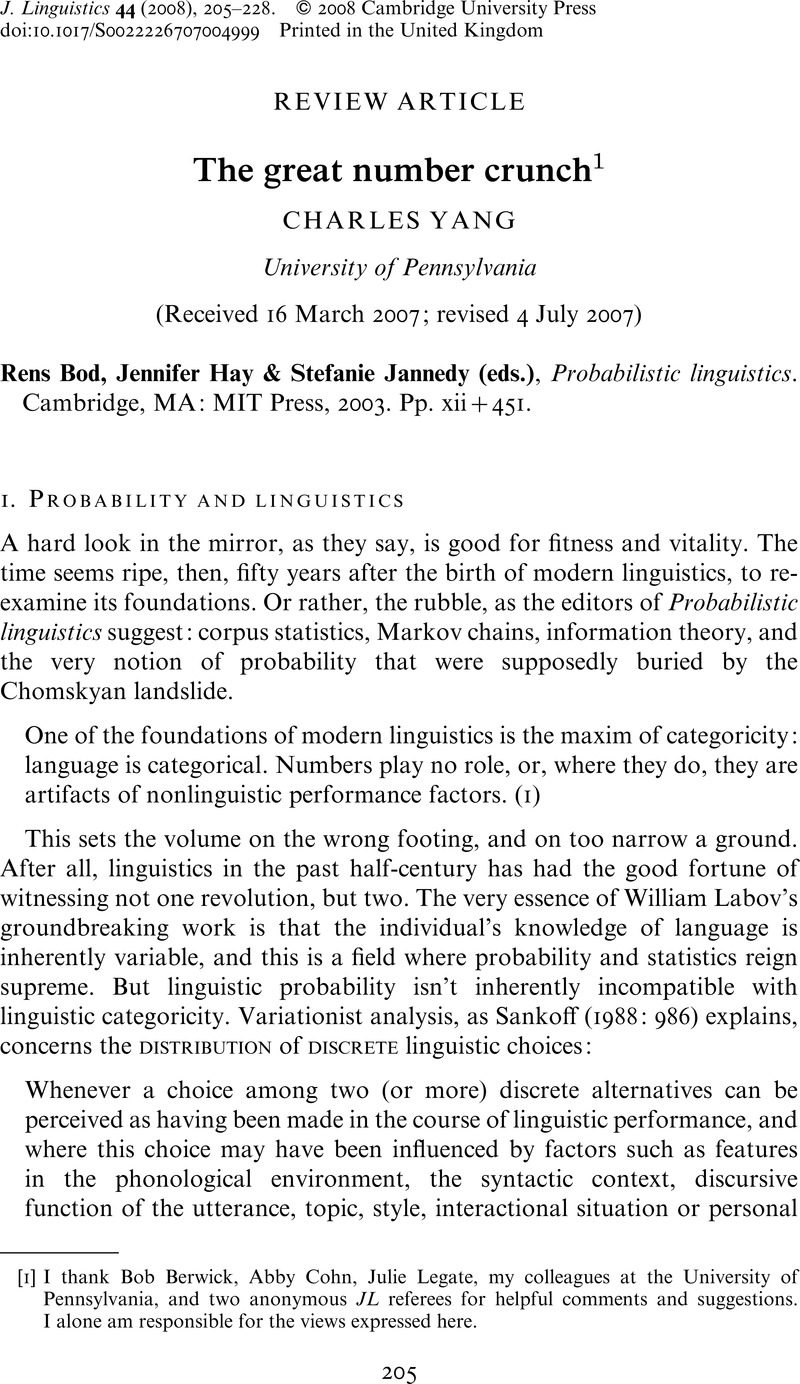Crossref Citations
This article has been cited by the following publications. This list is generated based on data provided by Crossref.
Culicover, Peter W.
and
Jackendoff, Ray
2010.
Quantitative methods alone are not enough: Response to Gibson and Fedorenko.
Trends in Cognitive Sciences,
Vol. 14,
Issue. 6,
p.
234.
Yang, Charles
2010.
Three factors in language variation.
Lingua,
Vol. 120,
Issue. 5,
p.
1160.
2011.
Linguistic Nativism and the Poverty of the Stimulus.
p.
217.
Clark, Alexander
and
Lappin, Shalom
2012.
Philosophy of Linguistics.
p.
445.
Frank, Michael C.
Tenenbaum, Joshua B.
Gibson, Edward
and
Snyder, Joel
2013.
Learning and Long-Term Retention of Large-Scale Artificial Languages.
PLoS ONE,
Vol. 8,
Issue. 1,
p.
e52500.
Clark, Alexander
and
Lappin, Shalom
2013.
Complexity in Language Acquisition.
Topics in Cognitive Science,
Vol. 5,
Issue. 1,
p.
89.
Nagano, Tomonori
2015.
Acquisition of English verb transitivity by native speakers of Japanese
.
Linguistic Approaches to Bilingualism,
Vol. 5,
Issue. 3,
p.
322.
Clark, Alexander
2015.
The Handbook of Language Emergence.
p.
377.
Ambridge, Ben
2017.
Handbook of Categorization in Cognitive Science.
p.
567.
Clark, Alexander
2017.
Computational Learning of Syntax.
Annual Review of Linguistics,
Vol. 3,
Issue. 1,
p.
107.
Lau, Jey Han
Clark, Alexander
and
Lappin, Shalom
2017.
Grammaticality, Acceptability, and Probability: A Probabilistic View of Linguistic Knowledge.
Cognitive Science,
Vol. 41,
Issue. 5,
p.
1202.
Shaw, Jason
and
Kawahara, Shigeto
2018.
Predictability and phonology: past, present and future.
Linguistics Vanguard,
Vol. 4,
Issue. s2,
Christianson, Kiel
and
Deshaies, Sarah‐Elizabeth
2019.
The Handbook of Informal Language Learning.
p.
27.
Oseki, Yohei
and
Marantz, Alec
2020.
Modeling Human Morphological Competence.
Frontiers in Psychology,
Vol. 11,
Issue. ,
2024.
The Frequency-Grammar Interface.
Vol. 20,
Issue. ,
Disney, Stephen J.
and
Nu Cam Le, Le
2024.
Word-Final /s/-/z/ Omission in Vietnamese English.
Languages,
Vol. 9,
Issue. 10,
p.
327.



